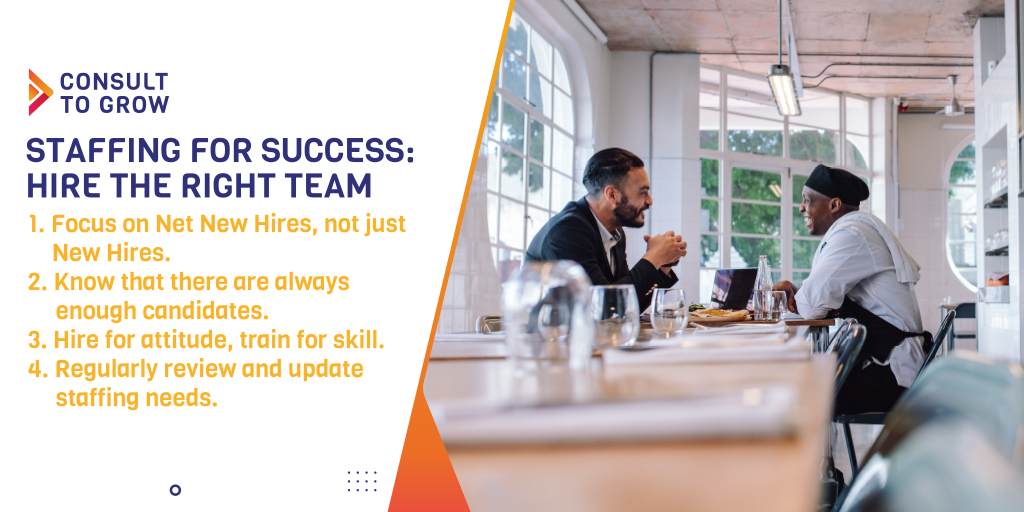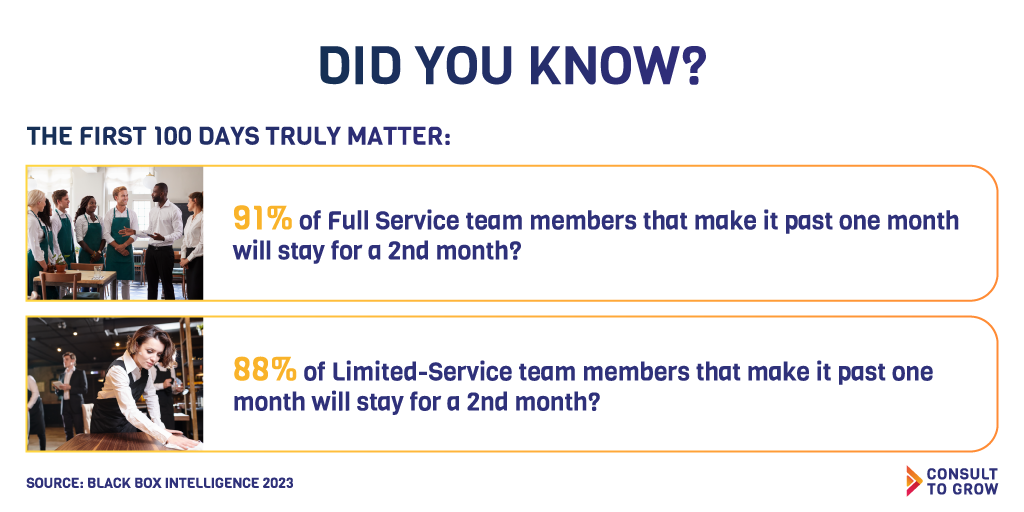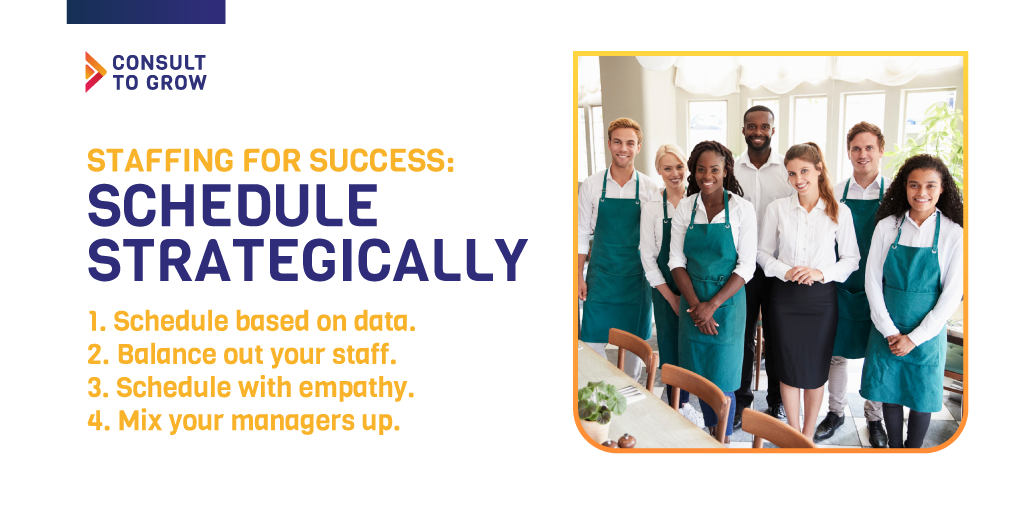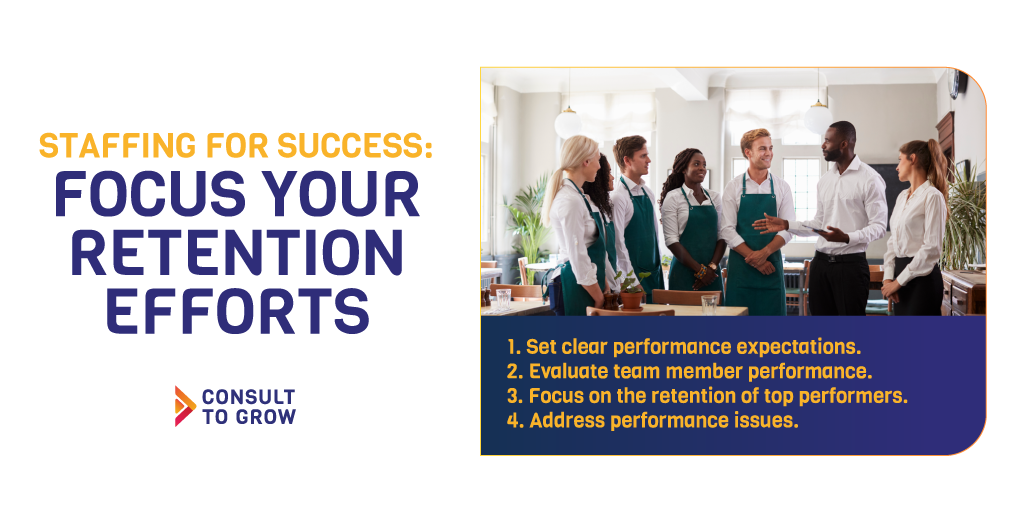
Quarterly Business Reviews (QBRs) and Their Value for Your Business (with SMART Examples)
What Is a Quarterly Business Review (QBR) & Why Does Your Business Need One? Running a business is demanding. As a business owner or founder,

Running a successful restaurant is a complex and challenging task that requires a combination of many factors. These factors include great food, attractive décor, and excellent customer service. However, one of the most critical elements determining the health of your restaurant business is staffing for success. The right staffing strategy can help you create a positive customer atmosphere, increase team member satisfaction, and boost your bottom line.
Managers who staff for success ensure that there are enough of the right team members on hand to meet the demands of the business. They accomplish this without having too many team members who are not being utilized effectively. This means managers have to hire and train the right people, schedule shifts for maximum success, and continuously staff the restaurants with the highest quality teams.
The first and most important step in staffing for success in your restaurant is to hire the right number of the right people. Your hourly and management staffing pars depend on several factors which may change seasonally: sales volume, sales mix, service model, team productivity, hours of operation, etc. Be careful not to focus too much on benchmarks when it comes to setting pars; every restaurant’s pars are unique and relying on competitor targets might leave money on the table. Also, be careful to base staffing par more on data than the general feeling of the management team.
Next, once hourly and manager pars are set, make sure you hire the best team members to fill them. You want team members who are friendly, outgoing, and have a genuine passion for the food service industry. Look for individuals who have experience in customer service, are reliable, and have a positive attitude. Additionally, it’s important to ensure that your team members are a good fit for your restaurant’s culture and values. A great way to hire the best team members is to use our customizable hourly team member interview guide and our hourly best practices hiring guide.

If you’re missing any of the items above, you might find taking our free HR Self-Assessment helpful.
Once you have spent the time and money to hire the right people, it’s important to onboard, train and cross-train them properly. Offer comprehensive training programs that cover everything from customer service to food preparation and presentation. Encourage your team members to ask questions and provide feedback, and make sure they are comfortable with the procedures and protocols in your restaurant.

If you’re missing any of the items above, taking our free HR Self-Assessment is helpful.
One of the most critical parts of staffing for success is scheduling. Proper scheduling can help ensure that you have the right staff in the right place to maximize each shift. Here are some scheduling strategies to help you optimize your restaurant’s shift-by-shift performance:

A successful restaurant schedule requires careful planning, effective communication, and the ability to adjust as needed. All too often, managers copy and paste schedules quickly, de-optimizing restaurant performance. It’s critical that managers use these scheduling strategies. It’s also important that above-unit managers confirm that each location’s scheduling is setting them up to staff for success.
A Players don’t want to work for B Players. It’s important to continually work to hire and retain a best-in-class team in each restaurant you operate. Focus on constantly identifying and retaining the best-performing team members while also addressing performance issues. Here’s some steps to sharpen your retention efforts to staff for success:

Staffing for success is critical in the restaurant industry. By following these tips, you can ensure that you have the right people in place to provide excellent service, create a positive atmosphere, and drive your bottom line. A well-staffed restaurant is the foundation for success, so make sure you invest the time and effort to get it right!
Consult to Grow® always wants our clients to prioritize sales generation while strategically managing costs to maximize profit. We provide strategic advice to restaurant owners, founders, and operators to level up restaurant businesses. Ready to get started?

What Is a Quarterly Business Review (QBR) & Why Does Your Business Need One? Running a business is demanding. As a business owner or founder,

Owning multiple locations is often the most exciting milestone for a restaurant or retail owner, but it also comes with unique challenges. This post is

Is the weight of leadership or ownership pressing down on you? Do you wake up each day drained, overwhelmed, and uninspired? Maybe you are struggling